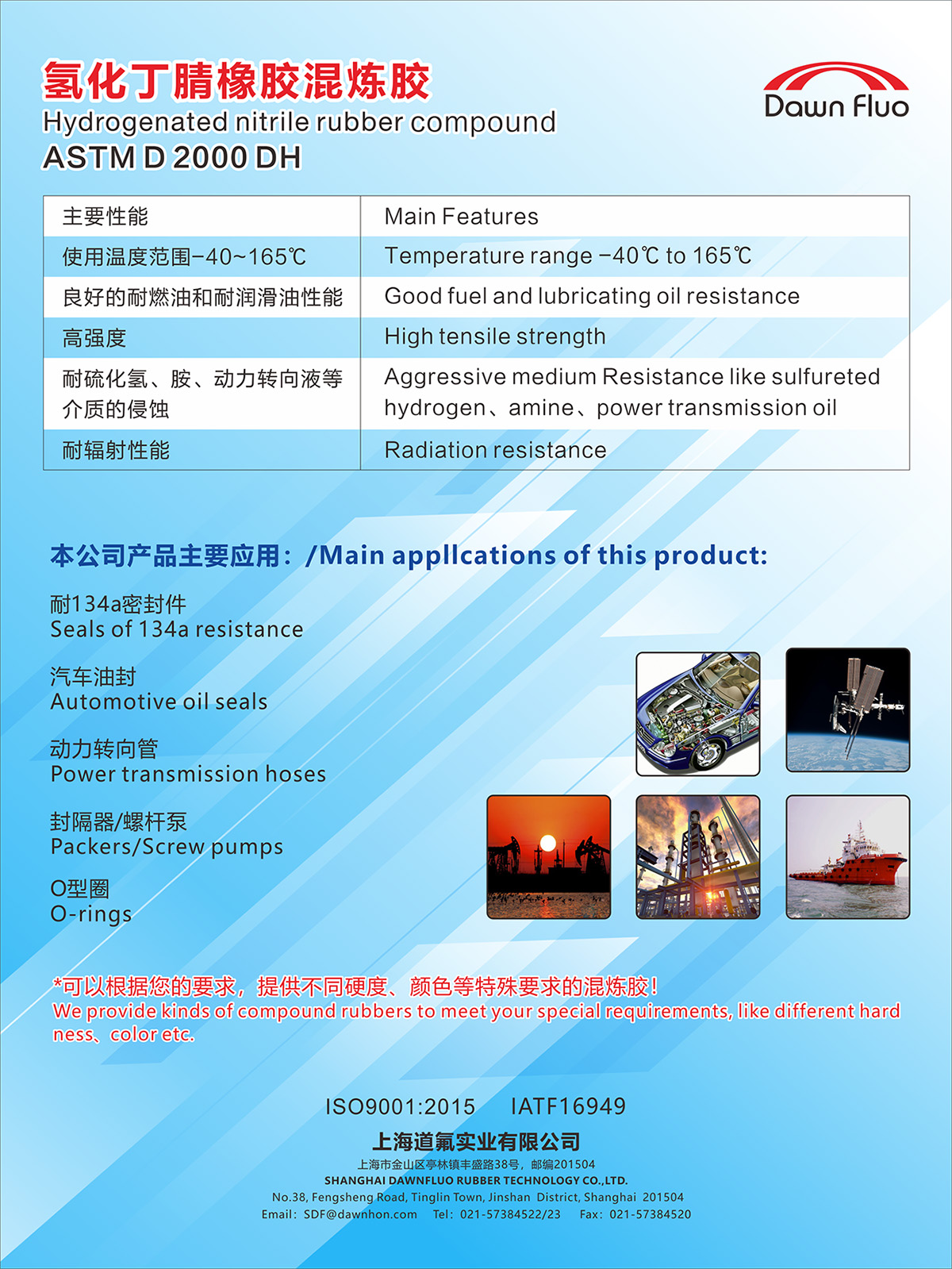
- 产品介绍
Hydrogenated nitrile rubber (HNBR) is a highly saturated elastomer obtained by special hydrogenation of nitrile rubber. Hydrogenated nitrile rubber has good oil resistance (good resistance to fuel oil, lubricating oil, and aromatic solvents); And due to its highly saturated structure, it has good heat resistance, excellent chemical corrosion resistance (good resistance to Freon, acid, and alkali), excellent ozone resistance, and high compression permanent deformation resistance; At the same time, hydrogenated nitrile rubber also has characteristics such as high strength, high tear resistance, and excellent wear resistance, making it one of the most excellent rubbers in terms of comprehensive performance. HNBR has a high temperature resistance of 130~180 ℃, a cold resistance of -55~-38 ℃, and excellent mechanical properties, which better meet the requirements of the automotive industry compared to other polymers.
Hydrogenated nitrile rubber is widely used in fields such as oil fields and the automotive industry. With the development of the automotive and petroleum industries, rubber components not only require oil resistance, but also good characteristics such as heat resistance, high temperature resistance, high pressure resistance, and oxygen resistance. Ordinary nitrile rubber (NBR) is far from meeting these requirements, although some of its uses have been replaced by fluororubber, fluororubber is expensive. Therefore, people began to explore the improvement of NBR performance, and hydrogenated nitrile rubber was successfully developed to meet this new need.
Temperature range: -40 ℃~150 ℃
Advantages:
&Middot; Better wear resistance than nitrile rubber
&Middot; Excellent corrosion resistance, tensile strength, tear resistance, and compression resistance
&Middot; Good ozone resistance and weather resistance
&Middot; Seals in systems that can be used as environmentally friendly refrigerant R134a
&Middot; Can be used as a seal for automotive engine systems
Disadvantages:
&Middot; Not recommended for use in alcohol, ester, and aromatic solutions
Applicable medium:
&Middot; Aromatic hydrocarbons
&Middot; Plant and animal oils and fats
&Middot; HFA, HFB, HFC hydraulic oil
&Middot; Low concentration acids, alkalis, and salts at moderate temperatures
&Middot; Water and steam (149 ℃)
Unsuitable media:
&Middot; Chlorinated hydrocarbon
&Middot; Polar solvents (ketones, esters, ethers)
&Middot; strong acid


 WeChat official account
WeChat official account
